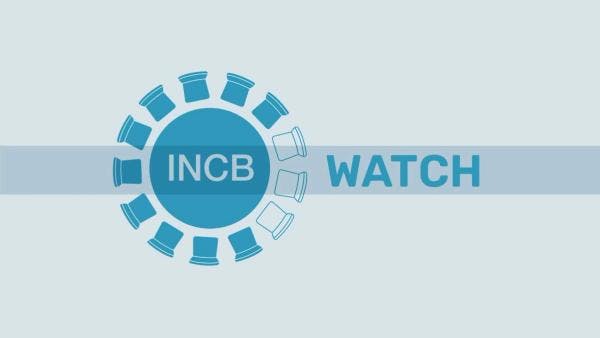The INCB: 10 years of medical cannabis
The issue of the medical use of cannabis is one in which the Board has failed to match the progress it has made in certain other areas, such as the death penalty. Its position on the therapeutic applications of cannabis remains as it was at the close of the UNGASS decade (1998-2008); indeed, if anything, it is now worse.
In its 2008 Annual Report, with the growth of legally accepted medical cannabis amongst US states, the Board repeatedly expressed its ‘concern’. In California, for example, which is generally recognised as having a relaxed approach to the regulation of its medical cannabis programme, the Board predicted that it may lead to a further increase in cannabis abuse in the United States and could affect other US states. The Board called upon the authorities of the United States to continue its efforts to stop that practice, which is, it said, in contradiction to national law and is in violation of article 23 of the 1961 Single Convention on Narcotic Drugs.
The Board’s 2013 Annual Report continued in this vein, noting that ‘in the United States, 21 states and the District of Columbia have now enacted legislation allowing for the establishment of medical cannabis programmes’. It brought to the attention of governments that medical cannabis should be subject to those control measures outlined in articles 23, 28 and 30 of the 1961 Single Convention. At the time, judged the INCB, they were not being fully implemented, giving rise to issues of non-compliance with the international treaties.
In its 2018 Annual Report, the most recent report and the strictest discourse yet on medical cannabis, the INCB questions the evidence base for medical cannabis and argues that it led to public health problems associated with increased ‘abuse’, in addition to resulting in the legalisation of non-medical or ‘recreational’ cannabis use. Around the world, says the Board, preparations containing cannabinoids ‘are used in the belief that they will alleviate a wide range of symptoms, often in the absence of high-quality evidence that they are safe and effective’.
The INCB claims that there is weak evidence that dronabinol treats nausea and vomiting in cancer patients; moderate evidence for use of nabiximols in treating neuropathic pain and muscle spasticity in patients with multiple sclerosis; and moderate evidence that CBD may reduce seizure frequency in some genetic intractable childhood epilepsy syndromes. Cannabinoids, claims the Board, are not a first-line treatment for any of those conditions. In North America, meanwhile, ‘weak regulation of medical usage has allowed the diversion of cannabis to non-medical use and, according to some, has facilitated the legalization of non-medical cannabis is some states in the United States’.
It should be noted that the INCB has no mandate for evaluating scientific evidence – this responsibility lies with the World Health Organization’s Expert Committee on Drug Dependence which, it should be noted, has just released its own recommendations on cannabis scheduling. While it is true that the evidence base for cannabinoids is not currently strong, it appears likely that the politics surrounding cannabis, a drug which the Board has strongly opposed since the early 1980s, are influencing its judgements as they appear in these Annual Reports. The non-medical use of this substance lurks in the background of its conceptualisation of medical cannabis, in all its forms. This has remained the position held by the INCB across the ten-year period that we are examining here.
For a more detailed analysis of the INCB’s Annual Report for 2018 and its stance on cannabis, please read IDPC’s latest report ‘The International Narcotics Control Board on cannabis: A critique of the Report for 2018’.
Topics
Regions
Related Profiles
- International Narcotics Control Board (INCB)
